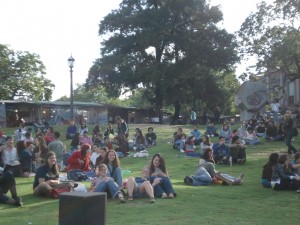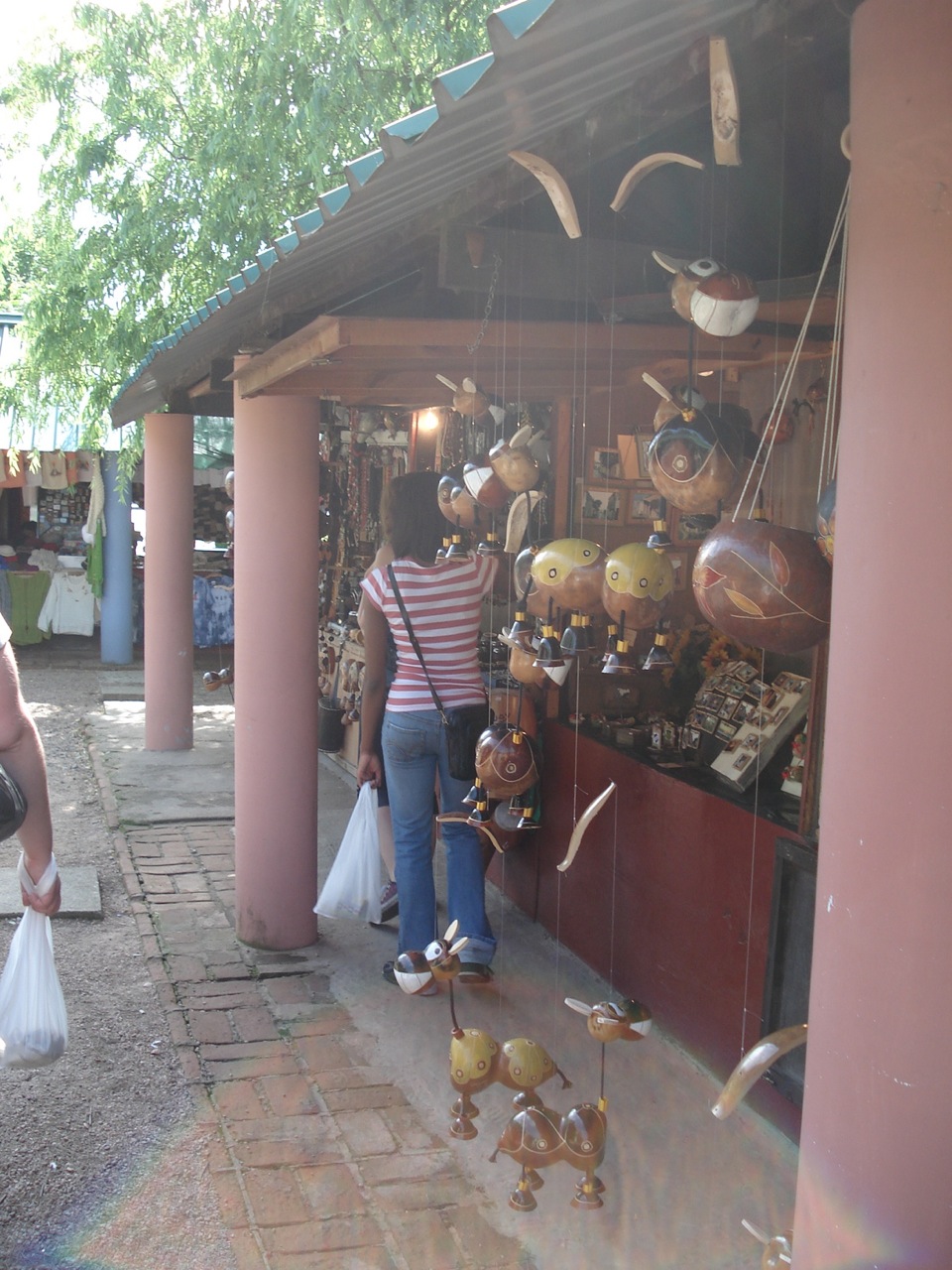Recently, I read an article on Etsy’s blog about a guy who sells macramé jewelry to pay for his travels around South America. Gwenaël Petiot of France quit his job in 2007 to spend three months traveling in South America. At the end of the three months, he decided to keep going, and asked some friends to teach him how to make macramé. Upon returning home to sell his work at a fair in France, a fashion designer picked up his work, and his jewelry & accessories became part of a fashion line that debuted during fashion week. Although he enjoyed his collaboration, he didn’t stay in the fashion world–he returned to traveling, valuing his freedom more than a high-profile career in the fashion world.
Stories like this make me nostalgic for my study abroad days. I was lucky enough to have the opportunity to travel to Mexico, Turkey, and Argentina during my time in college. One of the things I loved best about these trips was visiting all of the open air markets. I think that sometimes it may have seemed to my friends that I was a bit obsessed with shopping, but it wasn’t so much the shopping aspect of it that made me want to do it. It was more the chance of finding treasures, handmade gems from the people and culture I was visiting. As a fellow maker, I was on the lookout for beautiful things made with care and skill. As a fiber artist, I was especially on the lookout for woven and textile items. I have a nice but small collection of scarves and shawls as a result of that.
 In Buenos Aires, Argentina, where I studied abroad for a semester, different neighborhoods had their own weekend markets, or ferias. One that we visited often was the feria at Paseo Recoleta, near the Recoleta cemetery. During the week, it’s just a large, grassy park, with walking paths, and surrounded by the cemetery walls and shopping malls on different sides. On weekends, it transforms into a winding market with all kinds of items for sale, like art, clothing, jewelry, toys, accessories, and food. One ubiquitous item sold by many vendors is the mate (pronounced “mah-tay”), a hollowed out gourd used to prepare and sip the tea of the same name. In Argentina, mate is a social drink. It is prepared by one person, then the mate is passed around the circle, each person taking a sip until it reaches the preparer again, who tops it off with more hot water. I remember a sunny afternoon spent sitting in the grass at Paseo Recoleta with friends, enjoying empanadas for lunch and sipping mate. At first I didn’t think I had any pictures of this feria, and still, the picture I have isn’t very good, but you can see the people hanging out on the grass, with the feria stalls behind us.
In Buenos Aires, Argentina, where I studied abroad for a semester, different neighborhoods had their own weekend markets, or ferias. One that we visited often was the feria at Paseo Recoleta, near the Recoleta cemetery. During the week, it’s just a large, grassy park, with walking paths, and surrounded by the cemetery walls and shopping malls on different sides. On weekends, it transforms into a winding market with all kinds of items for sale, like art, clothing, jewelry, toys, accessories, and food. One ubiquitous item sold by many vendors is the mate (pronounced “mah-tay”), a hollowed out gourd used to prepare and sip the tea of the same name. In Argentina, mate is a social drink. It is prepared by one person, then the mate is passed around the circle, each person taking a sip until it reaches the preparer again, who tops it off with more hot water. I remember a sunny afternoon spent sitting in the grass at Paseo Recoleta with friends, enjoying empanadas for lunch and sipping mate. At first I didn’t think I had any pictures of this feria, and still, the picture I have isn’t very good, but you can see the people hanging out on the grass, with the feria stalls behind us.

The photo at the top of this post is a picture from Colonia, Uruguay. The study abroad program I was with took us on a weekend field trip there, and although it is just across the Rio de la Plata from Buenos Aires, the atmosphere is totally different. A UNESCO World Heritage site, Colonia is cobblestone streets and modest stone buildings, with an old drawbridge and stone wall. In Colonia, I discovered a Manos del Uruguay shop. Manos del Uruguay is a brand of yarn I was familiar with, but in the shop they didn’t sell yarn for knitting, only goods made from the yarn. And in fact, Manos del Uruguay isn’t only a brand of yarn, it’s a cooperative organization founded to empower rural women to make a living and improve their lives. Very cool. I purchased a wool ruana there that I still use to stay cozy every winter. Another memory I have from Colonia is encountering a girl sitting in the grass with a blanket spread out in front of her. She had macramé jewelry spread out on the blanket, and was making more as she sat there. That’s what I imagined when I read the article about Petiot selling his macramé jewelry in South America to fund his travels. That sunny day, out on the grass by the mouth of the Río de la Plata, waves crashing on the rocks in a quiet, cobblestone little town.
Here are a few more pictures from my feria travels:




